| Uncle Al's Pictorial Pearls of Wisdom from the Ontarios - 6 a potpourri of educational items suggested by the photos |
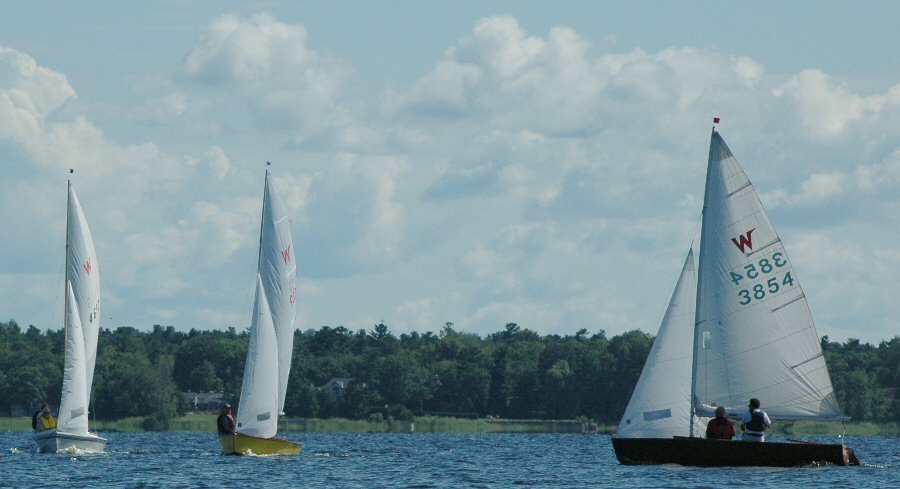 |
|
Later in the first beat: Marc
(3854) felt we'd get better pressure by going a bit further left after
Bill crossed us on port earlier. Now we'll see how that worked out, as
Bill (yellow) and Andrew come across on starboard. One thing we already
know: tacking here, only 100 yards from the port lay line, will not be
an option since a tack might well trap us to leeward of the other two
right out to, and possibly past, the lay line.
... |
 |
|
... |
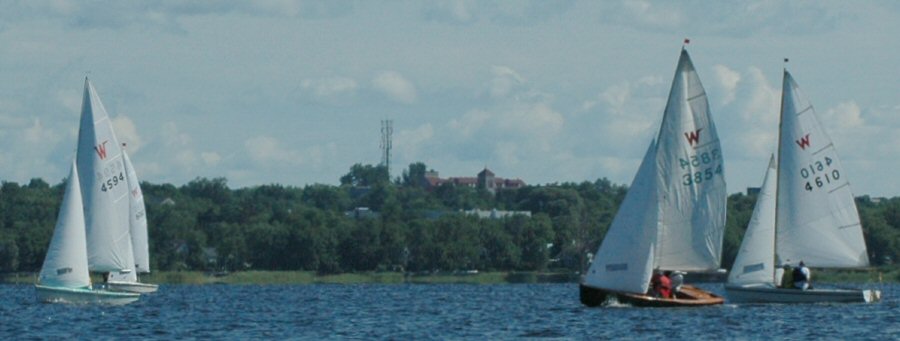 |
|
... tack and throw in a short
hitch on starboard, if for no other reason than to get over where Jamie
and Brian are - a side that will be favoured once the shift coming down
the river (from the left in the picture above) reaches everyone. And
this close to the mark (100 - 200 yards?), this may well be our final
shift!! By going across here, Marc and Al fully expect to hit a knock,
tack, and increase their edge over Andrew who has not yet tacked.
Besides, here we are getting close to the starboard lay line, and
anything that postpones getting stuck on the layline is always good,
especially with boats ahead of you.
... |
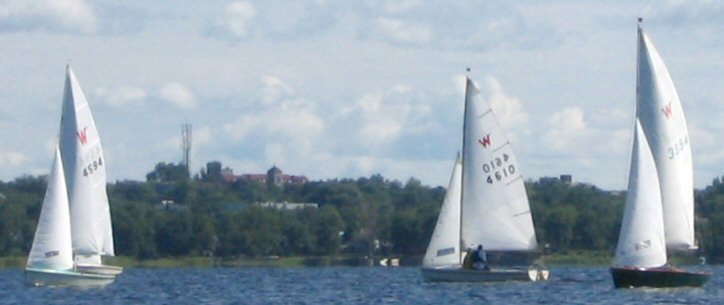 |
| Even with sails eased a bit to
regain speed after the tack, Marc ... ... ... |
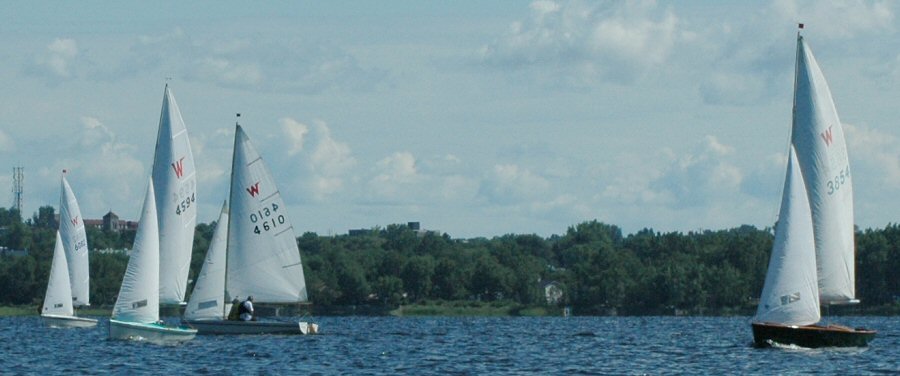 |
| ... is still marginally
outpointing the leaders. Andrew (4610) has sailed into the port-tack
lift, and ... ... |
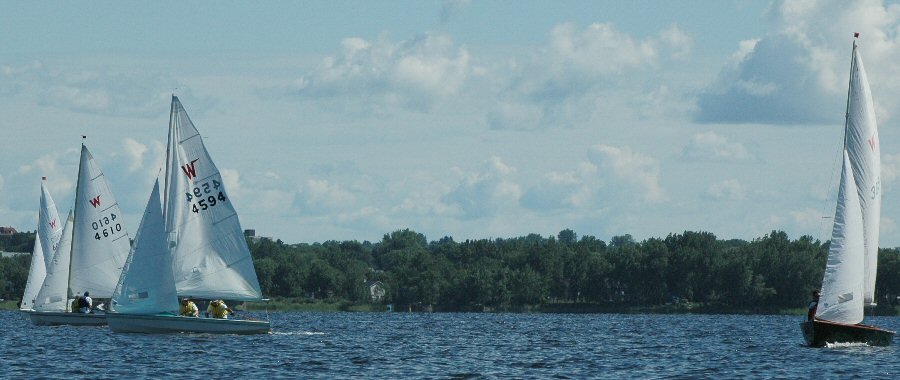 |
|
... our leader, Jamie (4594),
tacks for its benefits as well. He might have done better to tack as
soon as he was knocked, at which point it was pretty well certain that
port would not get any better than this. Instead, Jamie gave in to the
very understandable temptation to see if he could actually cross
Andrew. He could, but every yard he sailed to prove this to himself was
time spent giving away parts of his lead. So why hasn't Marc (r) tacked? Well, we have to
protect against Bill who is off to the left and is the only boat that
can still beat us in the series. Besides, we thought we saw better
breeze to the left and are still lifted on the starboard tack, so we're
waiting for that knock that is (almost) sure to come down the river. A
knock that ...
... |
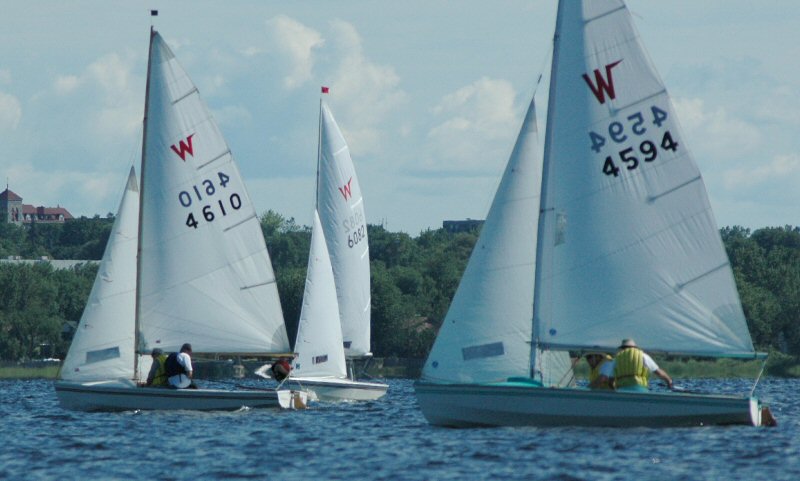 |
|
... |
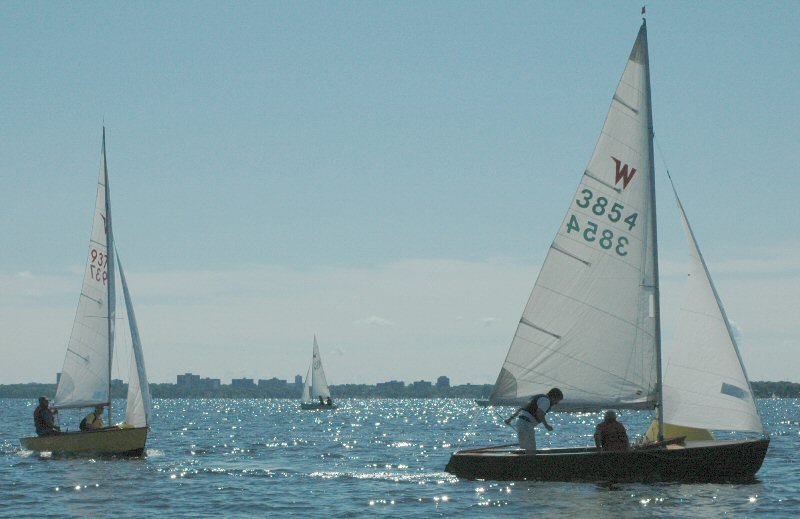 |
| Al unhooks the spi halyard and
we're ... ... |
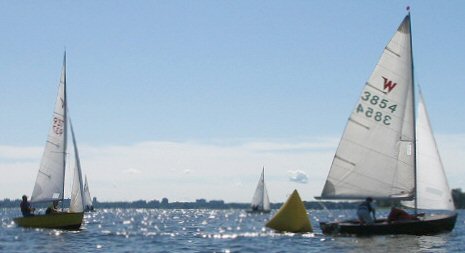 |
|
... |
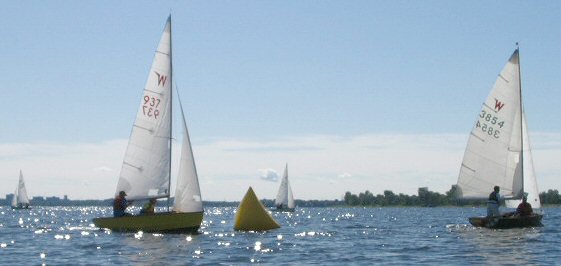 |
|
And before setting the pole, Al
will have to briefly crank the jib in tight to get the windward spi
sheet uncaught from the jib foot after the hoist. But there's no big
rush since no one is about to take our wind and SHADES is getting a good 95 to 98%
of her max speed for this reach even without the spi, i.e. it will take
Bill and Frank some time to become a threat to our wind even if they
make the perfect hoist and set
instantly.
... |
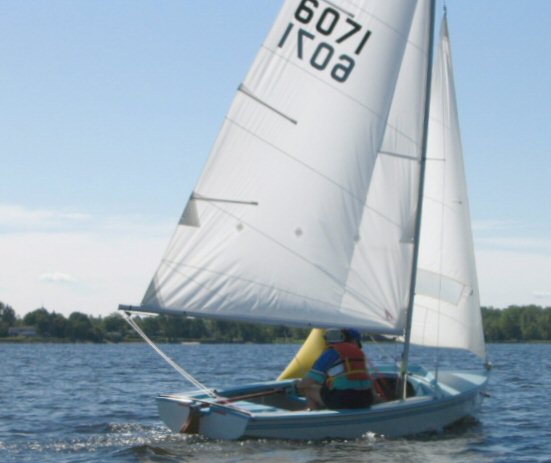 |
| Robin and Carolyn round in good form: note
how
the main is way out and the boat heeled to windward to help the boat
turn away from the wind onto the reach. ... |
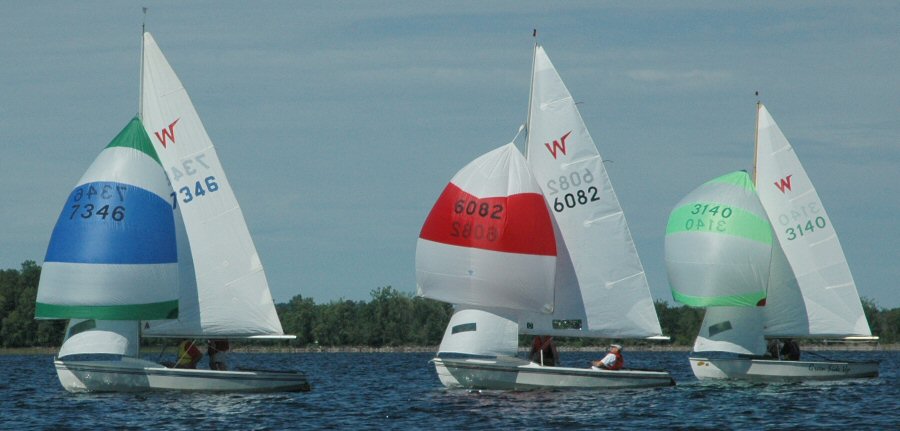 |
| If Brian (6082) briefly lets his spinnaker
halyard off a few
inches, that twist will come out of the top of his spi, and then he can re-tighten the halyard. ... |
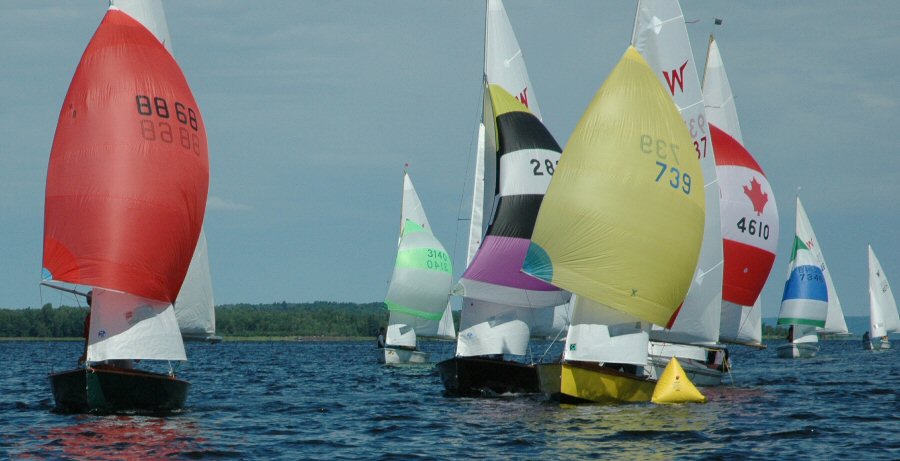 |
|
Tsk! Tsk! Marc (l) seems to be making a very wide
rounding here, I think to try to stay out of the intense wind shadow
from all those boats just astern. Sometimes, Marc and I disagree, but
the guy on the tiller always gets the final say and the crew accepts
this happily. In these situations, I have found it
virtually always pays to get the board down, gybe right at the mark,
cut it close, let the spi flog to leeward and sheet in to sail a close
reach until we're out of the doldrums. Then
we can get back to the spi. This keeps me less stressed than sitting
down to leeward of a clump of boats that are almost sure to get wind
before me and pass us. Still, the wind has
backed about 30° which, if it holds, will make this next reach a
virtual run. We shall see, I guess.
... |
 |
| Marc rests his case. ... |
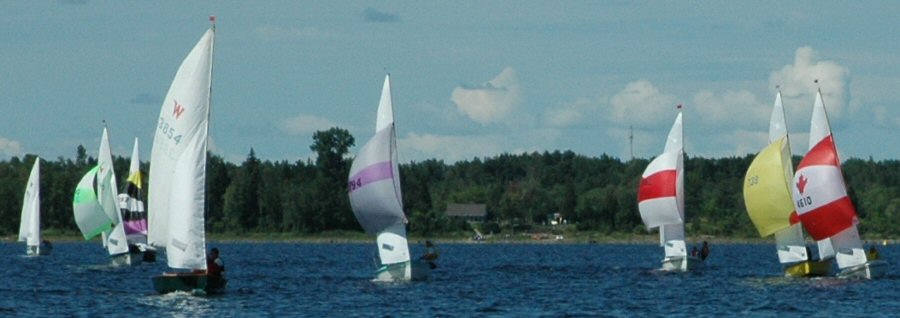 |
|
For this kind
of close spi reach, the first Stuart Walker book I read, a series of
articles by International 14 sailors who each spoke about their
strengths, recommends putting the board full down as if for a beat.
That is something that has worked for me for decades.
... |
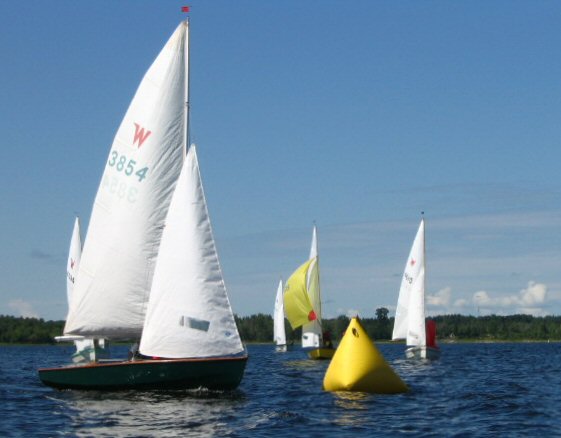 |
| As Marc prepares to start beat
#2 in a dying breeze, note the jib luff sag and lots of speed wrinkles
in the luffs of the sails. ... |
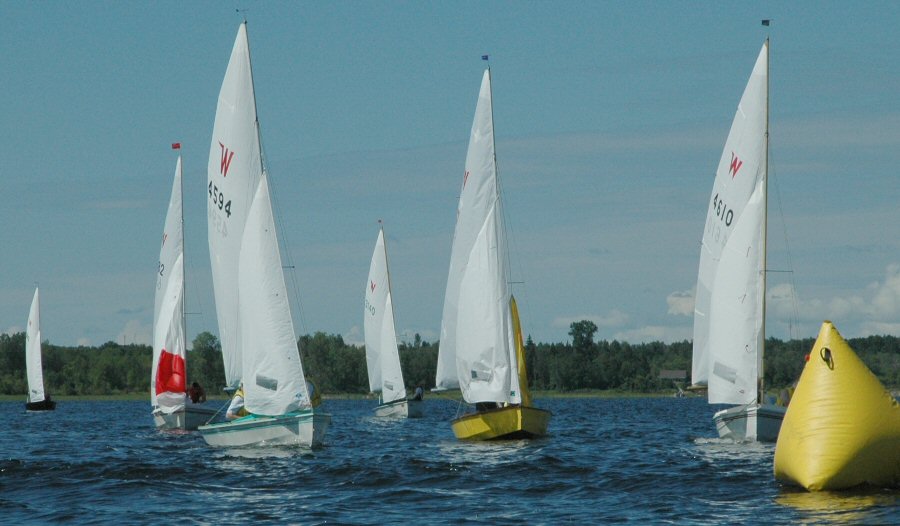 |
| This was a time where Jamie (3rd from left) really needed top
speed from his boat, if he was to avoid having to give room. Alas, his
main is seriously oversheeted which won't help. It appears that ... ... |
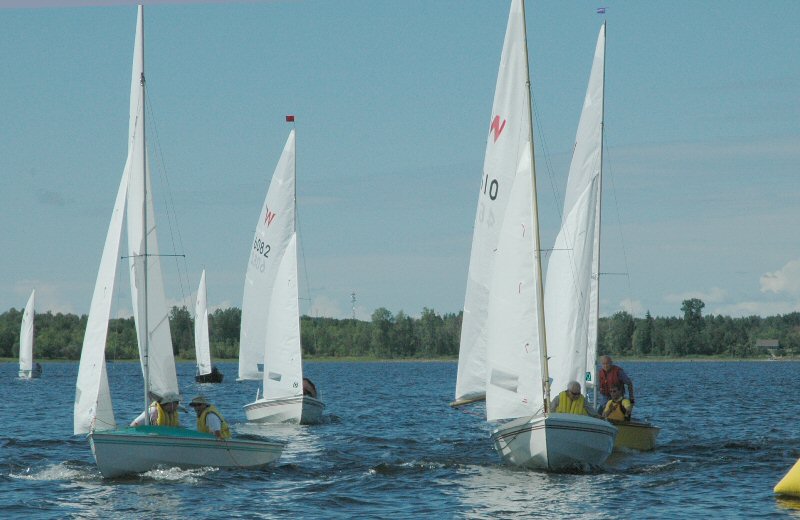 |
| ... Andrew (4610) has gained an
overlap. Jamie is giving him far more room than he needs to: rule 18
says that here, Andrew as the windward boat is only entitled to enough
room to make a seamanlike rounding. By steering this far clear of
Andrew, Jamie ... ... |
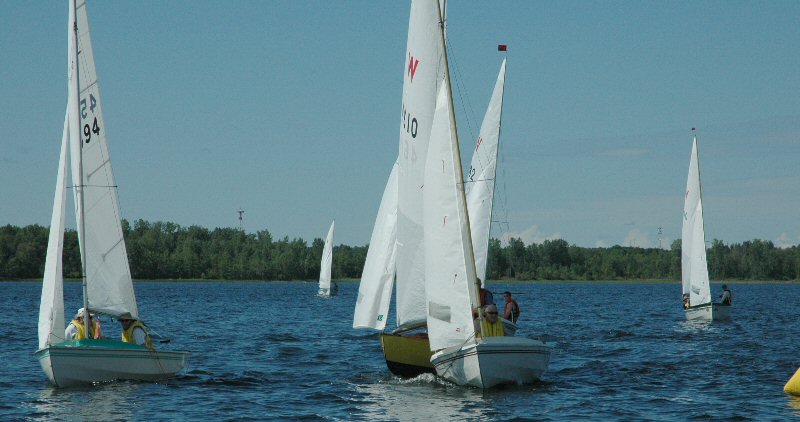 |
| ... has now gone outside the
Two-Length Zone and will have to give room to Bill as well. ... |
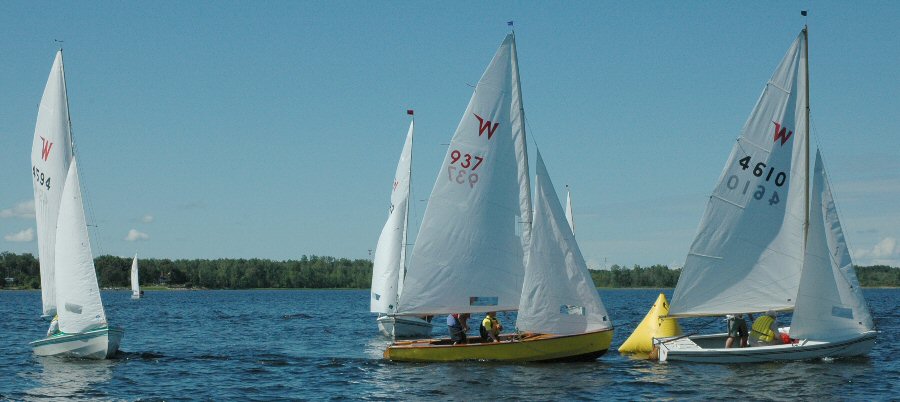 |
|
Jamie (l) demonstrates the
horrors of oversheeting: if you can't exactly match your sheeting to
your turn, then it's always better to let the "sheeting in" lag behind
a
bit. It looks worse to let your sails luff, but is, fact, far less
damaging!! It looks worse to let your sails luff, but is, fact, far
less damaging!! Bill (937)
meanwhile will have to watch out because Andrew always luffs up past
closehauled as he passes the mark going onto a beat. Bill likes to do
likewise but is going too fast to do that here without hitting the
mark. I think Bill and Frank
have just realized this, but ...
... |
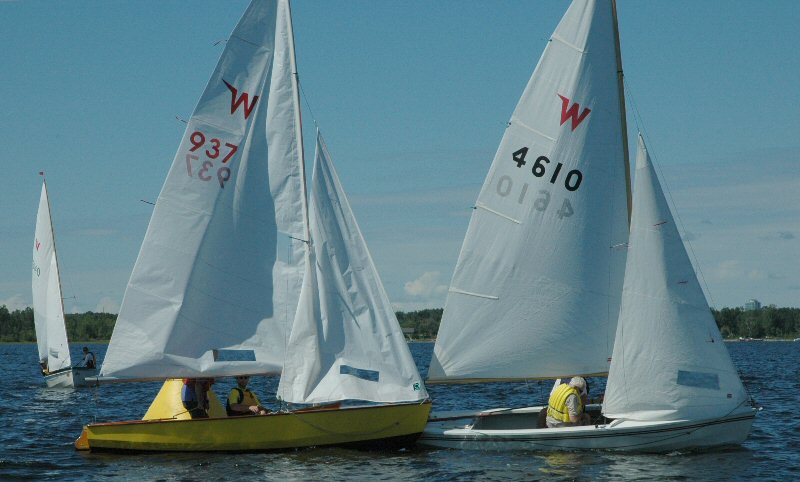 |
| ... too late! The boats touch
and it'll be more turns for Bill. ... |
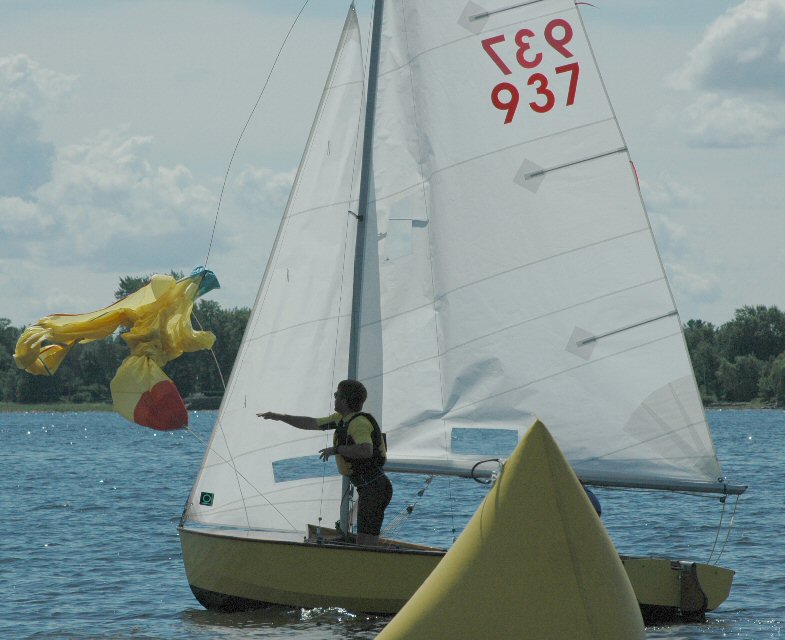 |
| Frank demonstrated the "chucker".
Bill did his bit with a rapid hoist before the chute could fall into the water and go under the boat. ... |
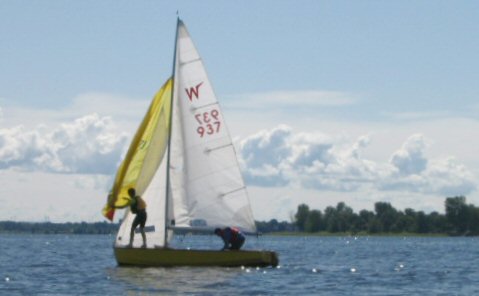 |
| But there wasn't enough wind to
balloon the spi which needed a
quick fix from Frank. ... |
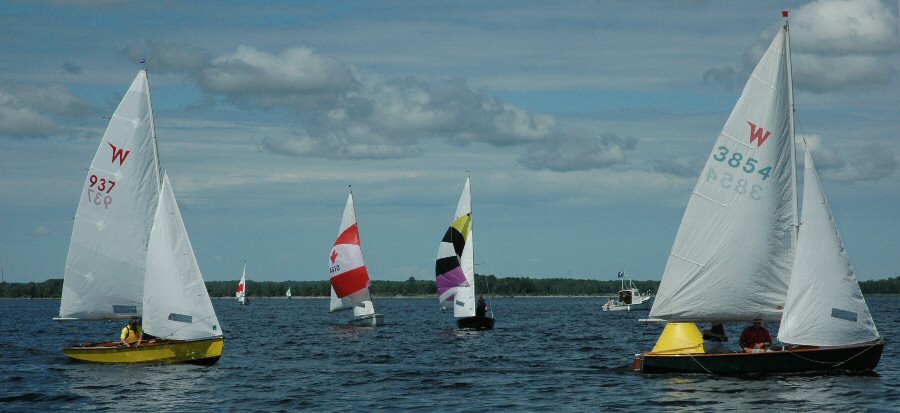 |
|
As can be seen
from the position of the RC boat off Marc's boom, the beat to the
finish will be short. The sailing angle of 3854 on a closehauled course
confirms that we are looking at a one-tack beat to the finish. If Marc
doesn't want to "give away" all three boatlengths of his lead, he needs
to ...
... |
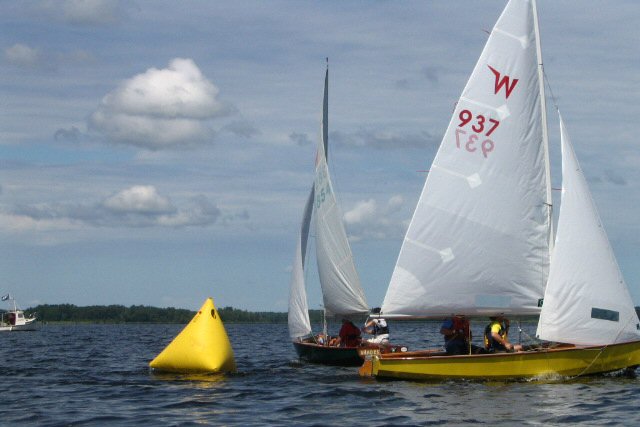 |
|
... tack almost immediately.
Such a tack is discouraging to the 2nd-place boat which can no longer
tack onto the shortest course to the finish without doing so into
severe dirt. A more palatable, though still far from ideal, alternative
will be to hold port for two or three more boatlengths and then tack
into reasonably clear air. But of course, those two or three lengths
are more or less "wasted distance", since it's barely a closehauled
course to the finish from here as it is!
... |
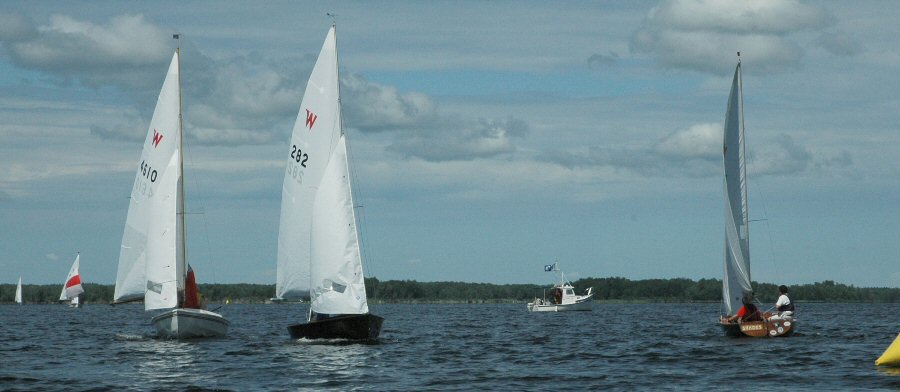 |
|
- just to be on the safe side. The trick here is to go ... ... |
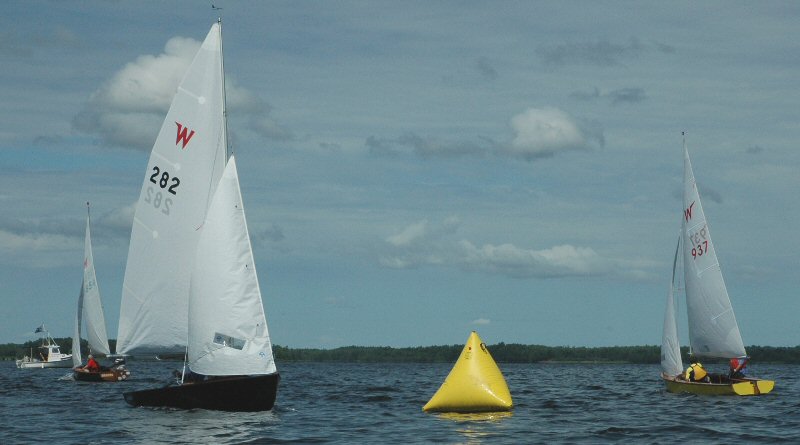 |
| ... (at least) as high as your
opponent. Note how Marc's lead has increased because Bill (937) had to hold port tack for a bit so that he could tack into clear air. ... |
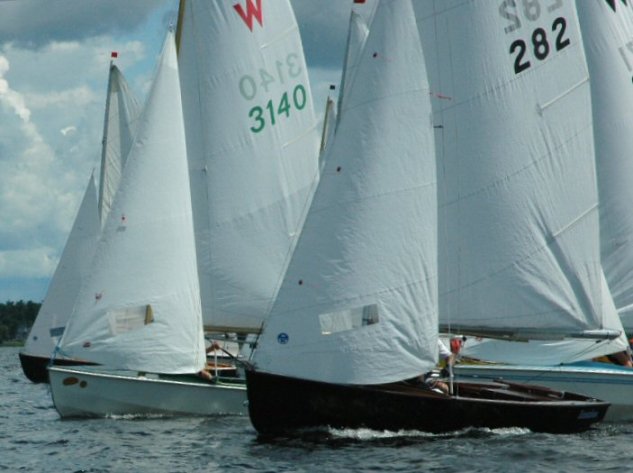 |
|
Right after the start gun, Dave
(282) wisely sails low. This
does two good things for him: 1. it increases his speed faster and to a
higher level, and 2. it gives him separation from Jason and his wind
shadow which of course angles aft, so that the further to leeward Dave
is, the less chance there is of getting blanketed.
... |
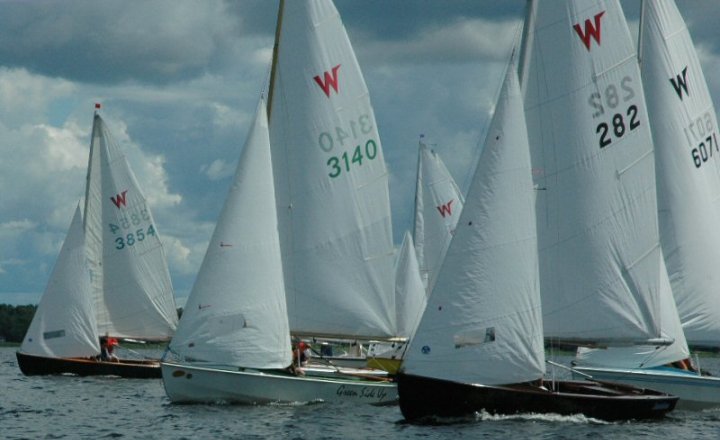 |
| And this, as you can see above, would be a killer of a place to get blanketed. Most racers would give in to the temptation to point here, but Dave didn't!! Well done, Dave!! |
| next Pearls page return to index |